2018 Ontario Time Attack Season Recap - Always Begin
This is the first installment of my 2018 season recap. Track School and Event 1 at Toronto Motorsports Park.
I purchased my BRZ to do two things. Be a reliable daily, and be a reliable track machine. This is a philosophy that many drivers on this platform share. With that, I jumped right into Ontario Time Attack, since their classing system is relatively fair and I wasn’t planning on doing any extensive modification. My season goals were to make friends and learn how to drive. OTA seemed like the right crowd to me, so I went to their Open House at Johnston Research and Performance and signed up for track school. I mingled with a few people who turned out to be really friendly and I immediately felt comfortable - “car meets” don’t even come close to this level of mutal respect, especially to newbies like me.
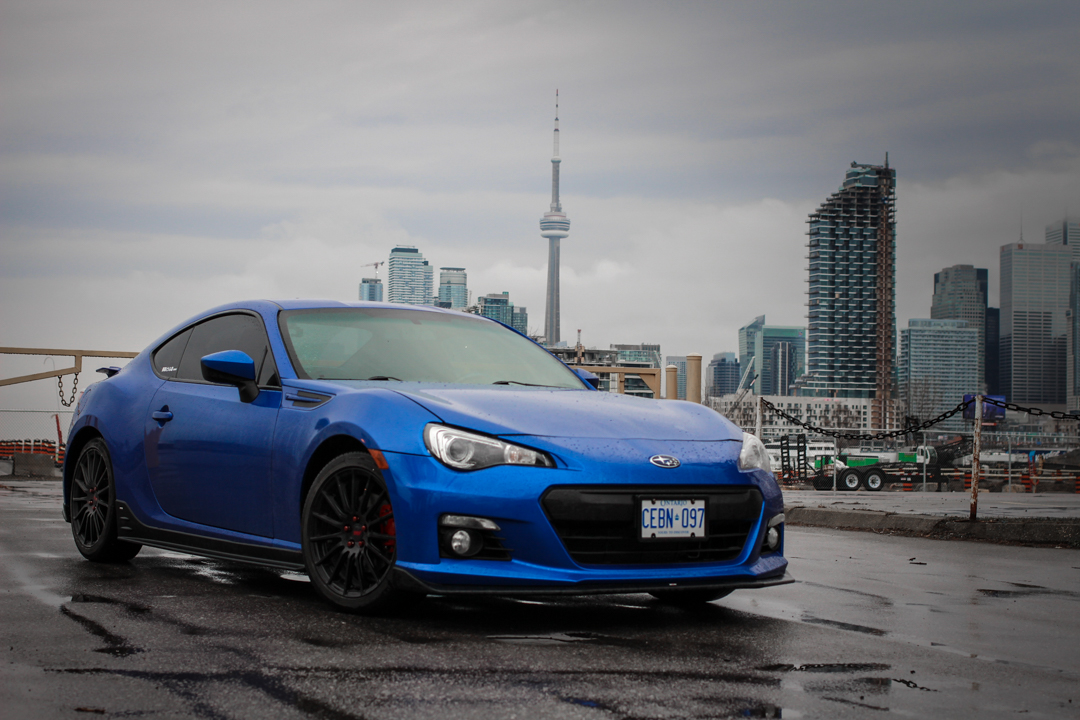
OTA Track School, Canadian Tire Motorsport Park, Driver Development Track
If you’re looking to get into the whole track driving thing, and are from the Greater Toronto Area, OTA hosts a “Track School” as their first event of the year. It is also mandatory to do track school get your Time Attack License to compete or lap with the organisation, so I started there. I went to track school at Canadian Tire Motorsport Park at the Driver Development Track, not knowing yet if competition was for me, as do many other participants. I knew I wouldn’t participate in every event due to budgeting, so even if I joined, being competitive in the league was numerically out of the question. Still worth an effort. The only modifications I made to the car were Hawk HP+ brake pads, Motul Racing Brake Fluid 600, and a used track specific wheel and tire setup consisting of Enkei RPF1’s spec’d at 17x8 +35 wrapped in 235/45R17 Bridgestone RE71-R tires.
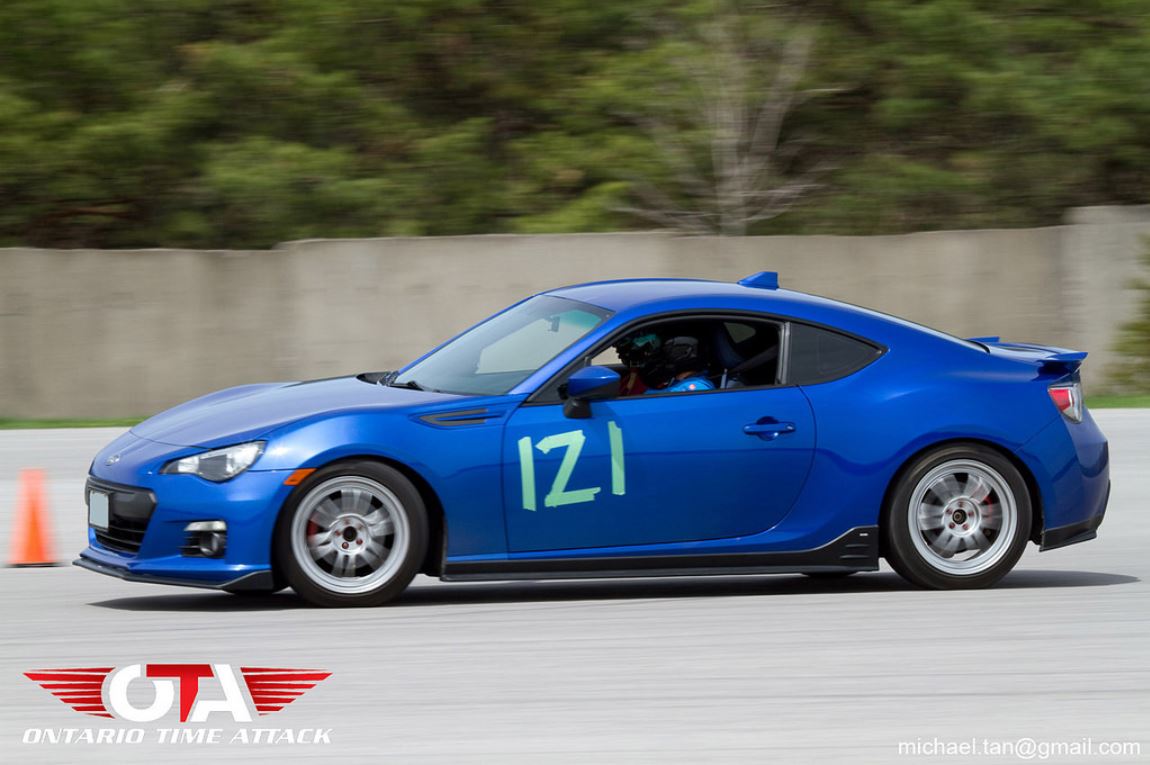
It becomes clear very quickly that formal driver training is almost mandatory to become faster. I had gone to a couple of track days beforehand, but I didn’t realize how important it was to have in instructor watch your habits and stop them from becoming your “Achilles Heel(s)”. It was also very clear that my vision was a big problem for me since I found difficulty in the AutoX section. Maybe it was because it was my first time on an AutoX course, but still, I needed to develop a better sense of my surroundings and a feel for the size of the car. Getting into performance driving, one phrase that would be constantly repeated to you over and over is “Eyes up, look ahead”. It is very difficult to be prepared for the next braking zone or corner if you’re not even looking.

Before I get too far “off-track” (haha) - this is a recap, not a lecture. But I could summarize Track School with the following: Entered with an open mind, and left feeling equally debilitated as you are confident, because that is what education is about. Track School to me became about showing as many mistakes as you can naturally make for an instructor to critque you within the time you’re with them. Also shout out to the instructors, who are volunteering their time to risk their lives to share their knowledge. They are probably more afraid than you are. After all, your mistakes can hurt or kill them, and they can’t do a thing about it. Oh yeah, and the DDT course is my absolute favourite course so far. More about it in the next installment.
Event 1: Toronto Motorsport Park
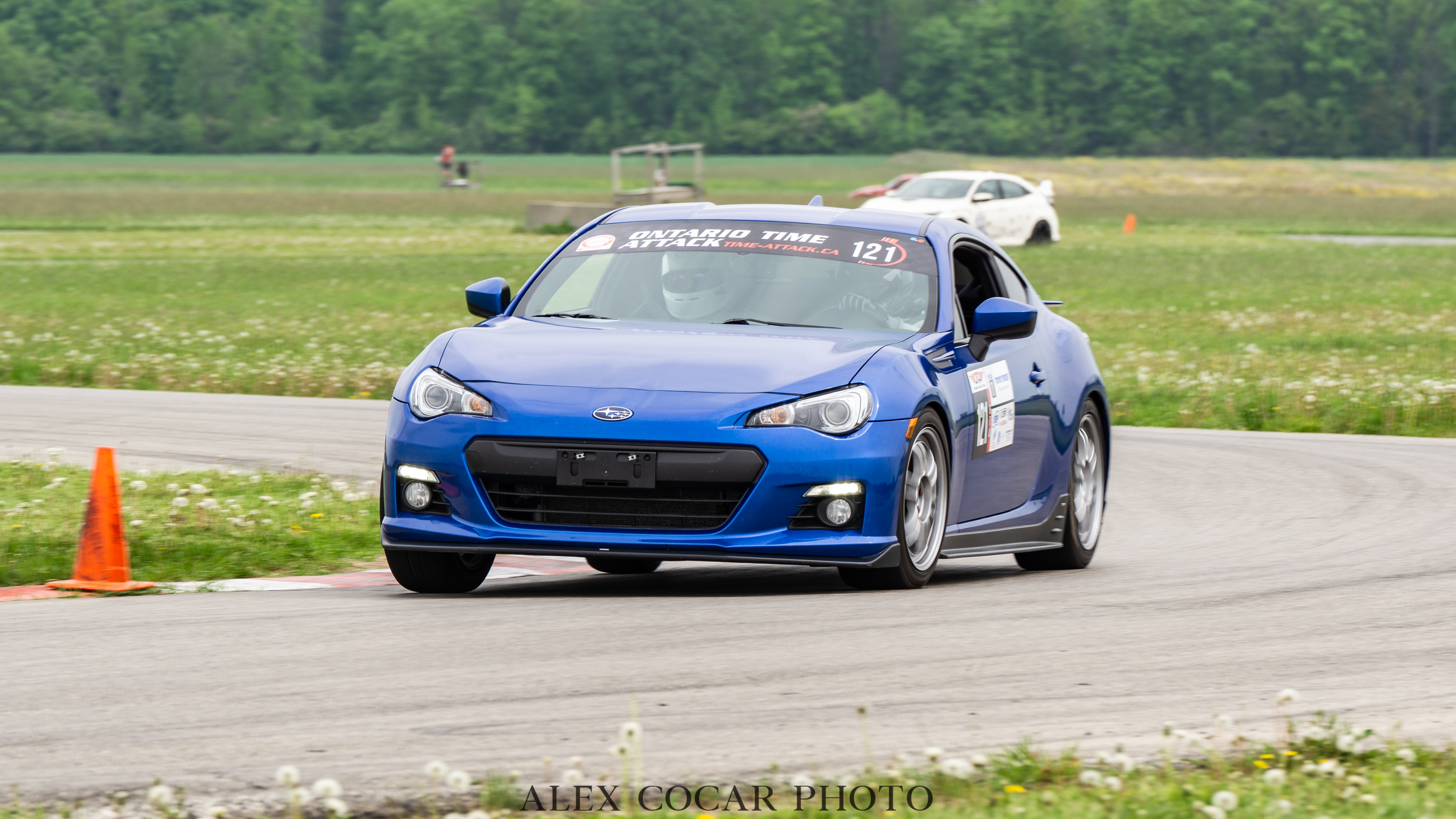
Toronto Motorsports Park Cayuga (TMP) is what I would consider my “home” course, as would a lot of Ontario drivers. Open lapping is cheap, frequent, and your lap times can be bench-marked with so many other drivers, making it even more fun to get better. It was my first competition event, so I was quite nervous all morning. Wearing a Fitbit is a good way to scare you’re self even more because you can read your heart rate, and I swear mine was above 90 BPM all day. I actually had to be stopped by one of the volunteers because I guess they saw my frantic face and rushing feet to get my car to the mandatory technical inspection, and they reminded me that its cool to be nervous, but there is nothing to be afraid of. I needed that.
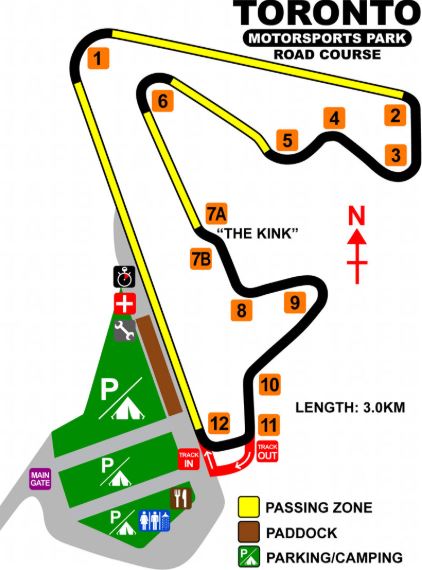
Every OTA event is scheduled the same way: Three run groups each get three 20 minute qualifying sessions, and your fastest time in qualifying determines your position in the first of three competition runs that happens after lunch. Your staging position in the rest of your comp runs are decided by your time in the previous. Each competition run consists of one warm-up lap, three hot laps, and one cool down lap. The morning of qualifying had dry and decent track conditions, but even still I spun out on turn 1 and went way off track in turn 2. Thankfully Nick (who has a years of driving experience on me) was in the car to coach me through both of those “firsts” of my track driving experiences.

The first and second competition sections were damp, and for the first time on a road course, I had the windshield wipers going. So on top of my nerves already firing off from being a part of this whole competition thing, the track surface was wet and I didn’t have a coach with me to guide me through it. I kept traction control on out of fear, and thankfully I didn’t hit the main wall, or flip the car in the mud. You can’t win it if you bin it. Despite a certain degree of tire slip to be faster, in a the wet, novice confidence is faster than trying to finesse slip and control oversteer. It’s hard enough to manage your car in the dry, so if you’re not confident yet, keep TC on and focus on being smooth and keeping the rear end tidy. I believe I still ran something of a 1:29 in the wet.
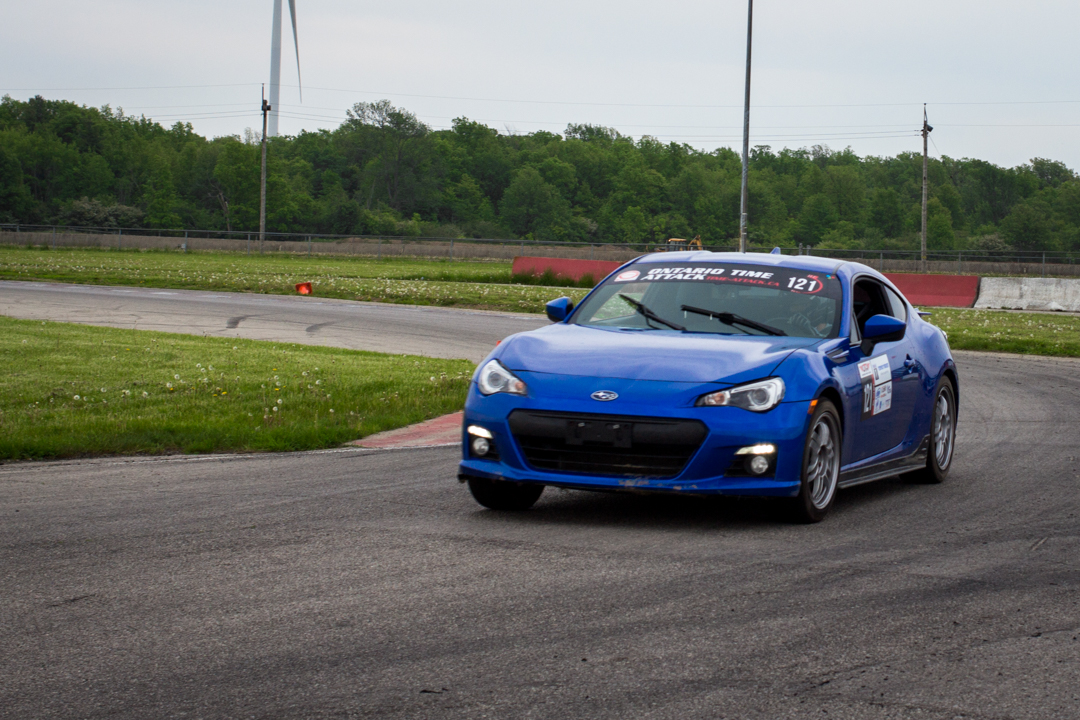
The final competition run was on a dry track, because that is the natural way of things in Ontario, Canada - unpredictable. I managed a 1:28:658, which was able to get me 6th place in my class for Event 1, and 9th Top novice of the day. It felt really great to have a result like that for my first event. I’m not terrible, but wow did I have a lot to learn. After reviewing the video footage and heat map of my fastest lap on Harry’s Lap Timer, my mistakes were clear. This makes data so critical. Highlight your mistakes and fix them if they’re a problem, but don’t let your lap timer distract you like it did me - I focused too much on the timer, and often missed markers as a result.
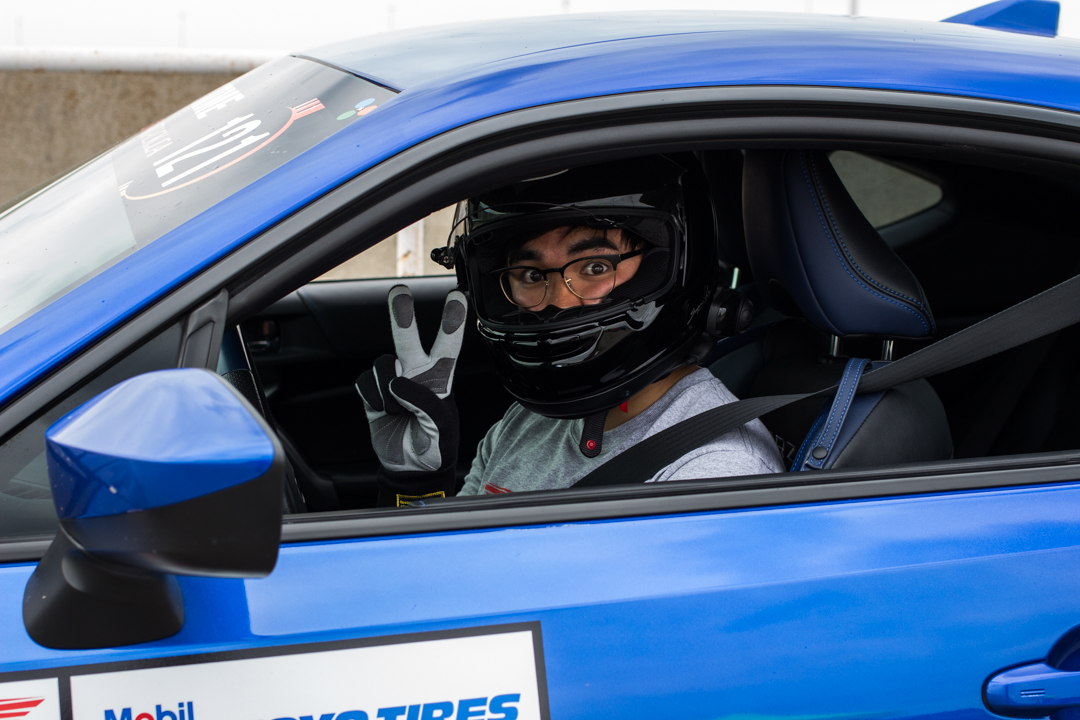
Remember that bit about TMP being a benchmark for a lot of drivers? This becomes important considering that fast drivers with similar setups to mine run anywhere between 1:24 and 1:26. One of my favourite things about performance driving is that while there are many different ways to achieve a fast time, slow is slow no matter what. So once you swallow your pride and realize you’re slow, you save money. No amount of vehicle modification can help you become faster. You cannot diagnose problems or identify areas of improvement with the car if you as a driver are slow, you simply aren’t helping yourself. Think of it this way - there are supercharged BRZ’s that will do a 1:23, but naturally aspirated BRZ’s that will do a 1:21 - imagine spending $5K on a supercharger setup and still being slower than an NA! Obviously if you don’t care to modify specifically for lap times, it doesn’t matter. I digress. I’m slow too (a current PB of 1:25.8) and still learning, but so is every single performance driver out there. There are no limits to how much you can improve, if that truly is your intention.

Lessons Learned…and Still W.I.P.
- Eyes Up, Look Ahead - look through corners and not at them. Ross Bentley’s Speed Secrets goes in-depth about this. Read and learn.
- Slow is Smooth, Smooth is fast - again, see Ross Bentley. I tend to jerk the wheel thinking the grip is there and that turn-in is sudden and fast, which in many cases is wrong and just leads to understeer – no load was given to the tires before turning.
- Its okay to be nervous, but drink water and breathe to ease yourself before your session. Driving should have 100% of your focus.
- Don’t give it the beans on your first lap out. Tires are cold, and your mind/eyes could use some warm up as well - Racing is 99% mental. I spun out the first turn of the first lap, and I was also the first driver out. That was humbling, but I’m glad I found the limit of a cold tire in a safe environment. All else, Full Send!
- Get familiar with markers as soon as you can - I think I off-tracked for two reasons: I didn’t have a marker, so I braked way too late. But you can certainly root cause late braking to the first line item of this list.
- Budgeting is important, racing is a stupid expensive hobby. Don’t spend on modification if you aren’t a decent driver first.
- Modern traction control systems are very good, and aren’t as intrusive as people lead on. A key note, as per Ross Bentley’s podcast with Bosch Engineer, Ryan Kristoff, is that if you don’t know why the systems are intruding on your inputs, you aren’t ready to turn them off. Use them to figure out why they’re yelling at you. There is no shame.
- Don’t let your lap timer distract you, focus your mind on stringing together the corners and staying on track, the laptime will follow